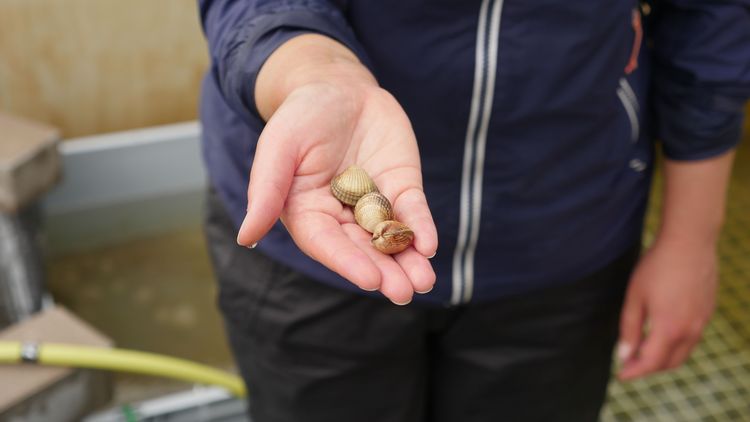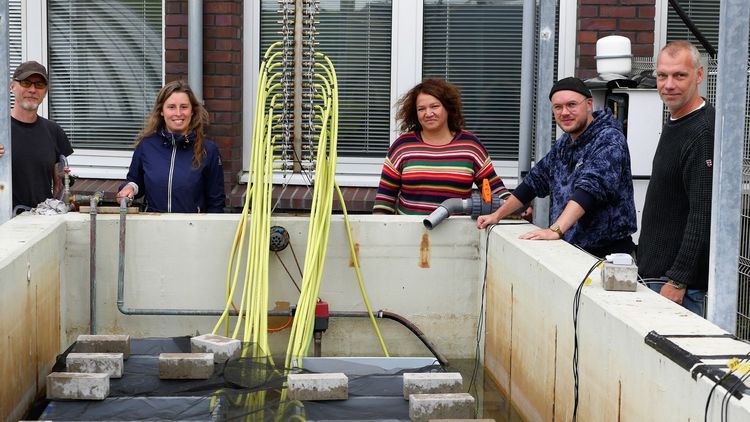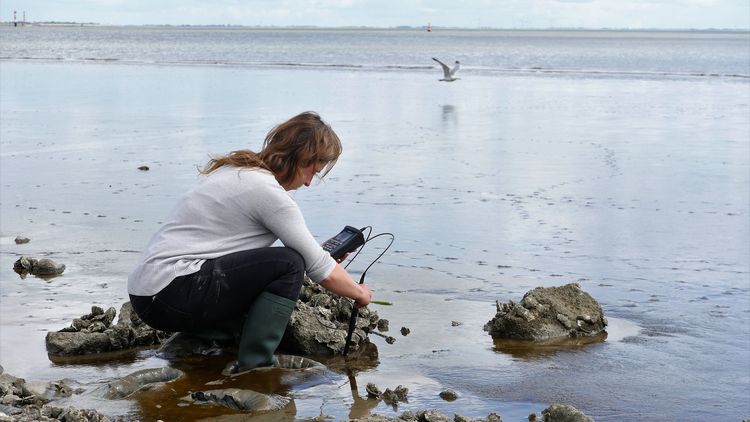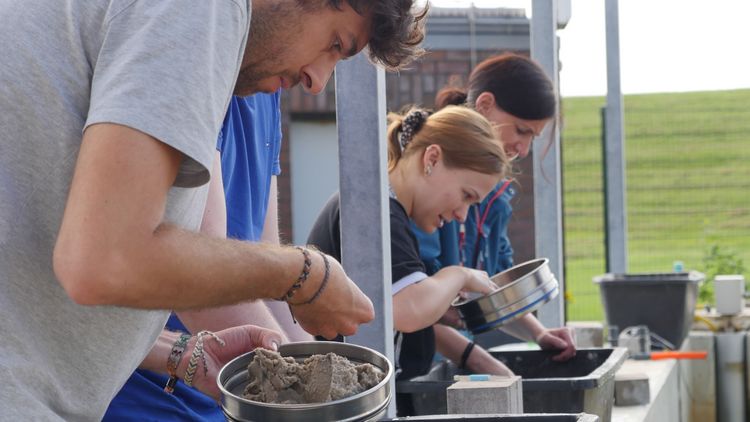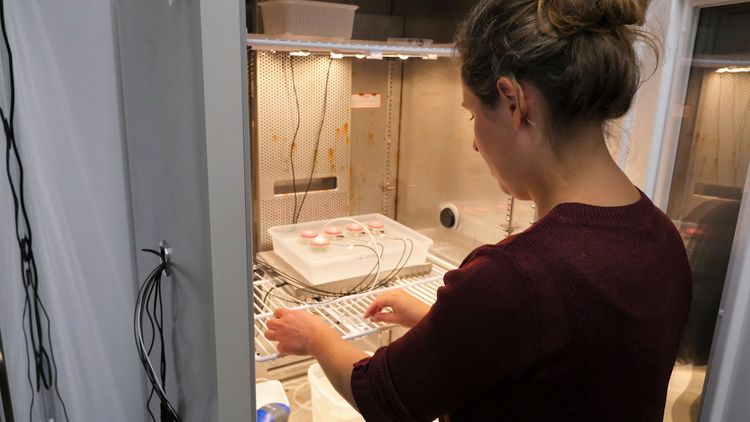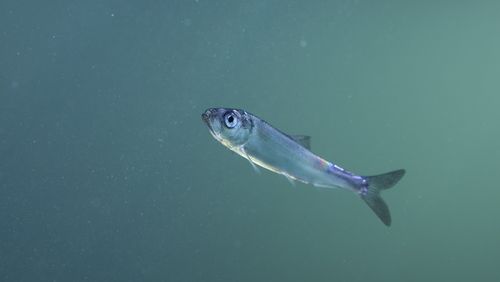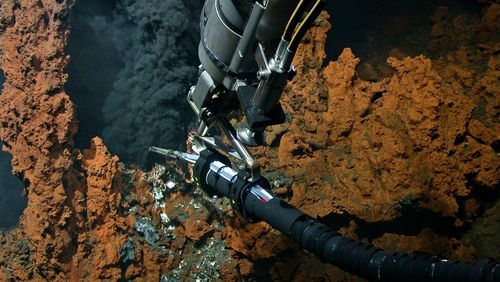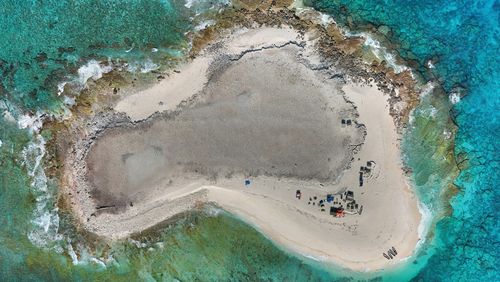How does unusual heat affect the flora and fauna of the Wadden Sea? Researchers from the Institute of Chemistry and Biology of the Marine Environment and the Institute of Biology and Environmental Sciences recently investigated this in a large-scale experiment.
July was the hottest month ever recorded, and heat events are becoming more frequent. How do they affect the flora and fauna of the Wadden Sea? Scientists from the Institute for Chemistry and Biology of the Sea (ICBM) and the Institute for Biology and Environmental Sciences (IBU) in Wilhelmshaven are currently investigating this. At the ICBM site in Wilhelmshaven, they are carrying out a large-scale experiment lasting about four weeks.
The setting for the experiment is one of the eight-metre-long outdoor pools in front of the institute building. The researchers have placed 25 experimental boxes, each holding about 50 litres of sand and seawater. The boxes contain a natural community of mudflat inhabitants, including bacteria, microalgae, various species of worms and molluscs such as sand masons, periwinkles or cockles, and mud scuds. The large tank itself is also filled with water.
During the first two weeks of the experiment, the team simulates a heat wave: For four days, the surrounding water is heated with a surface heater so that the bottom temperature in the experimental boxes rises by four degrees Celsius and the water temperature by six degrees Celsius compared to the outside temperature. The temperature remains at this level for a week, then is lowered again for two days. For the following twelve days, the temperature remains at the level of an unheated reference pool. To keep the other environmental conditions as realistic as possible, the boxes are exposed to the weather and the tides of the Jade Bay are simulated with treated seawater.
"How individual organisms or groups of organisms respond to temperature increases is already known from various studies. The special appeal of our experimental design lies in the fact that it ranges from micro- to macro-organisms and includes sedentary as well as mobile species, thus providing a comprehensive picture," says Dr Stefanie Moorthi, a member of the Planktology research group at the ICBM and one of the study leaders. The researchers want to determine how the organisms are doing at the beginning, middle and end of the experiment by measuring respiration rates, oxidative stress parameters and survival rates. A further 25 boxes in the second, unheated, outdoor tank will provide comparative values.
The large-scale experiment is part of the DynaCom project. The research groups Benthic Microbiology (ICBM, Prof. Dr. Martin Könneke), Planktology (ICBM, Prof. Dr. Helmut Hillebrand), Environmental Biochemistry (ICBM, Prof. Dr. Peter Schupp) and Biodiversity and Evolution of Animals (IBU, Prof. Dr. Gabriele Gerlach) are involved.

